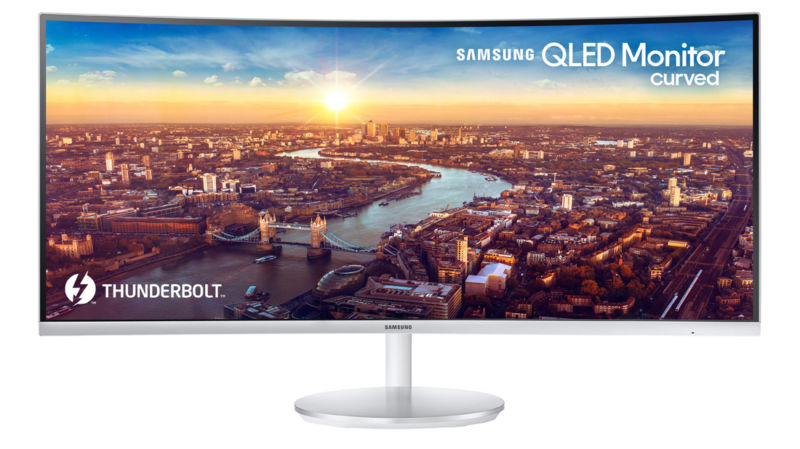Samsung looks to push Thunderbolt 3 with new 34-inch curved monitor

Not long after LG teased the new 34-inch “5K” monitor it plans to showcase at next week’s CES trade show, Samsung has announced a new widescreen panel of its own.
The latter Korean firm on Wednesday teased the CJ791, a not-imaginatively named 34-inch monitor with a 21:9 aspect ratio and a resolution of 3,440 x 1,440. That means it’s QHD, not 4K, and will thus not be as sharp as LG’s forthcoming screen. It is a curved panel, though, a form factor that makes more sense on the desktop than in the living room.This is another one of Samsung’s quantum-dot-using QLED panels, which the company says have a 4ms response time and 178-degree viewing angle. Naturally, Samsung is hyping the improved black levels and brightness that QLED usually brings (albeit to a lesser degree than OLED), but we’ll have to see the panel for ourselves before making any judgments.
Perhaps the most promising thing about the new monitor is that it comes with a Thunderbolt 3 port. That takes the same shape as a USB-C port, but it has a throughput of up to 40 Gbps, which makes it much faster than the 5-10 Gbps speeds on most non-Thunderbolt USB-C ports. Here, Samsung says it also provides up to 85 watts of power, which will allow it to charge compatible laptops. All of this means that, with the right notebook, some users can ostensibly get rid of a fair chunk of the cables sitting around their desk.
Though many high-end notebooks and other peripherals are shipping with some level of Thunderbolt 3 support these days, monitors supporting the standard have been relatively scarce. LG’s newly announced panels support Thunderbolt 3 as well, so here’s hoping the slightly wider adoption marks the beginning of a trend.That said, while the CJ791 won’t sit among the highest-end panels—even within Samsung’s own lineup—it isn’t likely to come cheap. Samsung did not mention a price in its press release, nor did it reply to a request for comment on more details on additional ports, HDR support, and the like. We’ll likely hear more once CES begins in earnest.

Post a Comment